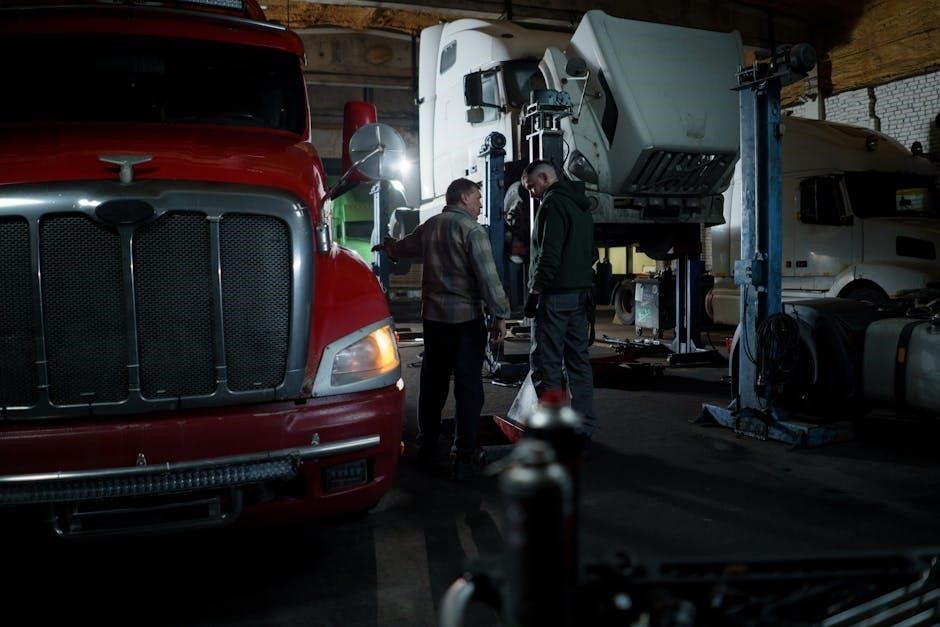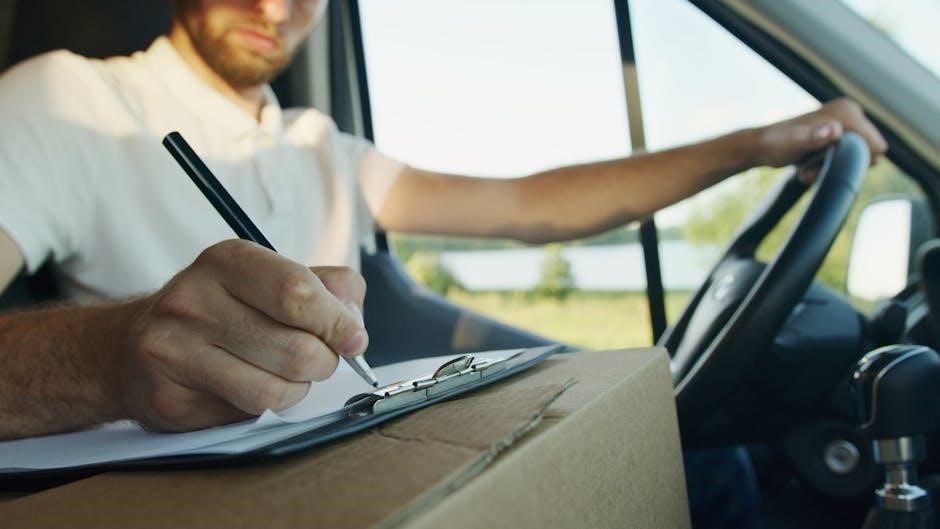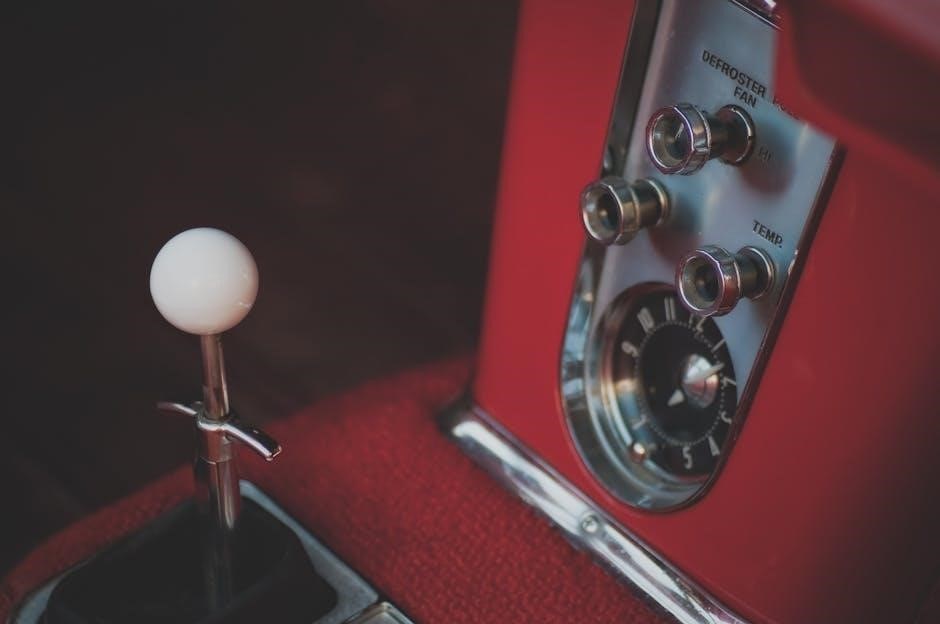
This manual serves as a comprehensive guide to understanding and operating your Vehicle Blackbox DVR. It provides detailed instructions, safety precautions, and troubleshooting tips to ensure optimal use and performance of your device.

Understanding the Vehicle Blackbox DVR
The Vehicle Blackbox DVR is designed to record video and audio while you drive. Understanding its functionality is crucial for capturing evidence, monitoring driving behavior, and ensuring safety on the road.
Purpose and Functionality
The primary purpose of a Vehicle Blackbox DVR is to continuously record video and audio while operating a vehicle. This provides crucial evidence in the event of an accident or other incidents. The device functions as an objective witness, capturing details that may be missed or disputed. Its functionality extends to monitoring driver behavior, deterring reckless driving, and providing valuable data for insurance claims and legal proceedings. Furthermore, some DVRs offer parking surveillance, activating upon impact to record potential vandalism or theft, adding an extra layer of security and peace of mind.

Key Features and Specifications
Understanding the device’s key features and specifications, such as recording resolution, storage capacity, and power supply, is essential for optimal usage and maximizing the benefits of your Vehicle Blackbox DVR.
Recording Resolution and Quality
The recording resolution and quality are critical aspects of your Vehicle Blackbox DVR, directly influencing the clarity and detail captured in the video footage. Higher resolutions, such as 1080p or even 4K, provide sharper images, making it easier to identify license plates, road signs, and other important details in the event of an incident. Understanding the various resolution settings and their impact on storage space is crucial for optimizing your recording experience. Factors like frame rate also contribute to the smoothness of the video. Adjusting these settings allows for balancing quality and storage efficiency.
Storage Capacity and Media
The storage capacity of your Vehicle Blackbox DVR determines how much video footage you can store before the device begins to overwrite older recordings. Most DVRs utilize microSD cards for storage, with varying maximum capacities supported. Selecting the appropriate size microSD card is essential to ensure you capture enough footage for your needs; Consider the recording resolution and loop recording settings, as higher resolutions and shorter loop intervals will consume more storage space. It’s also important to use a high-quality, reliable microSD card to prevent data corruption and ensure smooth recording performance. Regular formatting is also recommended.
Power Supply and Battery
Your Vehicle Blackbox DVR typically operates using the vehicle’s power supply, often through the cigarette lighter socket or a USB connection. Some models also include an internal battery, primarily for emergency recording in case of a sudden power loss due to an accident. The battery capacity is usually limited and not intended for extended recording sessions. It’s crucial to ensure a stable power connection to the DVR to prevent interruptions in recording. Refer to the manual for the specific voltage and current requirements of your device. Improper power supply can damage the DVR and void the warranty. Using a dedicated hardwiring kit is also an option.

Installation Guide
This section provides step-by-step instructions for properly installing your Vehicle Blackbox DVR in your vehicle. Proper installation ensures optimal performance and prevents damage to the device or your vehicle’s electrical system.
Mounting Instructions
Proper mounting is crucial for optimal video capture and device stability. Begin by selecting a suitable location on your windshield, ensuring it does not obstruct your view of the road. Clean the chosen area thoroughly with a glass cleaner. Next, attach the mounting bracket securely using the provided adhesive or suction cup. Adjust the camera angle to capture a wide view of the road ahead, including the horizon and lane markings. Ensure the lens is unobstructed. Conceal the power cable along the headliner and A-pillar for a clean and professional installation, avoiding any interference with airbags or vehicle controls. Test the camera’s functionality after mounting.
Connecting to Power Source
To power your Vehicle Blackbox DVR, use the provided car charger. Plug the smaller end of the charger into the DVR’s power port. Insert the larger end into your vehicle’s cigarette lighter socket or a 12V power outlet. Ensure the connection is secure. Some DVRs support hardwiring for continuous power, even when the ignition is off. If hardwiring, consult a professional installer to connect the DVR to your vehicle’s fuse box, using a compatible hardwire kit. Avoid overloading the circuit. Verify that the DVR powers on and begins recording when the vehicle is started. Disconnect the power cable carefully to prevent damage.
Basic Operations
This section covers essential functions like powering the device on/off, initiating and stopping recordings, and navigating the menu. Familiarizing yourself with these operations ensures effective use of the DVR.
Powering On/Off
To power on your Vehicle Blackbox DVR, press and hold the power button located on the device. The DVR will automatically boot when the car is ignited, if connected to a power source. Conversely, to power off manually, press and hold the same power button until the device shuts down. In automatic mode, the DVR saves the recording and turns off approximately 15 seconds after the car is turned off. Ensure the device is properly connected for automatic operation. Manual shutdown is also possible by holding the power button.
Starting and Stopping Recording
Initiating and halting recording on your Vehicle Blackbox DVR is straightforward. To begin recording, simply press the REC button. The device will start capturing video, indicated by a flashing icon on the screen. To stop the recording, press the REC button again. The device will cease recording and save the current video file. Ensure adequate storage space is available for uninterrupted recording. Some models may automatically start recording upon powering on. Always verify recording status before commencing your journey to ensure all events are captured.
Menu Navigation
Navigating the menu on your Vehicle Blackbox DVR is essential for customizing settings and accessing features. Use the MENU button to enter the main menu. Utilize the UP and DOWN buttons to scroll through the available options, such as video resolution, date and time settings, and loop recording. Press the OK or REC button to select a desired option. Within each setting, use the UP and DOWN buttons to adjust values. Press the MENU button again to exit the current setting and return to the main menu. Familiarize yourself with the menu layout for efficient operation.

Advanced Settings
Explore advanced settings to tailor your Vehicle Blackbox DVR experience. Configure date, time, loop recording, and G-sensor sensitivity. These settings optimize recording behavior and ensure the DVR meets your specific needs and preferences.
Date and Time Setting
Accurate date and time settings are essential for video evidence. To adjust, access the menu and navigate to the date/time settings. Use the navigation buttons to select each digit (month, day, hours, minutes). After selecting a digit, use the up/down buttons to change the value. Press the ‘REC’ button to move to the next setting. Once all values are correctly set, press ‘REC’ again to save the new settings. Ensure accuracy for legal admissibility and easy file organization. The device will continue to show the correct time even after the battery is low.
Loop Recording
Loop recording is a crucial feature, continuously recording video in segments of specified lengths (e.g., 1, 3, or 5 minutes). When the storage card is full, the oldest segment is automatically overwritten by the newest, ensuring uninterrupted recording. To enable, go to the settings menu and locate the loop recording option. Select your preferred segment length. If an incident occurs, you can manually save the current segment to prevent overwriting. Proper configuration of loop recording maximizes available storage and guarantees you’re always capturing recent events. This feature should be enabled for continuous monitoring.
G-Sensor Adjustment
The G-Sensor is a gravity sensor that detects sudden impacts or collisions. When triggered, it automatically locks the current video segment, preventing it from being overwritten by the loop recording function. Adjusting the G-Sensor sensitivity is vital; higher sensitivity means even minor bumps will trigger locking, filling up storage quickly. Lower sensitivity requires more significant impacts. Access the settings menu and find the G-Sensor options (often labeled as low, medium, or high). Experiment to find the ideal setting that balances capturing relevant events without excessive false triggers. Proper calibration ensures valuable footage is preserved.
Troubleshooting
Encountering issues with your Vehicle Blackbox DVR? This section provides solutions to common problems, guiding you through steps to diagnose and resolve them. Refer to this section before seeking professional assistance.
Common Issues and Solutions
This section addresses frequently encountered problems with your Vehicle Blackbox DVR. Issues covered include the device not powering on, recording failures, video quality concerns, and storage problems. Solutions involve checking power connections, verifying SD card compatibility, and adjusting settings. Date and time errors, loop recording malfunctions, and G-sensor sensitivity are also addressed. Furthermore, solutions for firmware update failures and addressing lens issues are provided, alongside steps to resolve issues of the DVR’s auto on/off functionality. Refer to this section for quick fixes before seeking advanced technical support.
Firmware Updates
Maintaining up-to-date firmware is crucial for optimal performance of your Vehicle Blackbox DVR. Firmware updates enhance functionality, fix bugs, and improve overall stability. To update, visit the manufacturer’s website and download the latest firmware version compatible with your device model. Follow the provided instructions carefully, typically involving transferring the firmware file to an SD card and initiating the update through the DVR’s menu. Ensure a stable power supply during the update process to prevent interruptions. Regularly check for updates to benefit from the latest improvements and features.
Safety Precautions
Prioritize safety when operating and installing your Vehicle Blackbox DVR. Avoid operating the device while driving to prevent distractions. Securely mount the DVR to prevent it from obstructing your view or becoming a projectile in case of an accident. Do not expose the DVR to extreme temperatures or humidity. Regularly inspect the device and cables for damage. If you notice any issues, discontinue use immediately. Only use the provided power adapter and cables. Do not attempt to disassemble or repair the DVR yourself. Ensure proper ventilation to prevent overheating. Always adhere to local traffic laws and regulations when using the DVR.
Legal Considerations
Using a Vehicle Blackbox DVR involves several legal considerations. Be aware of local laws regarding audio and video recording in vehicles, as some jurisdictions may require consent from passengers. Respect privacy laws when recording and sharing footage, and avoid recording in areas where it is prohibited. Understand the legal implications of using DVR footage as evidence in case of an accident or dispute. Familiarize yourself with data protection regulations and ensure you handle personal data responsibly. Be transparent about the presence of a recording device to avoid potential legal issues. Consult with legal professionals if you have any doubts or concerns regarding the legal use of your DVR.




